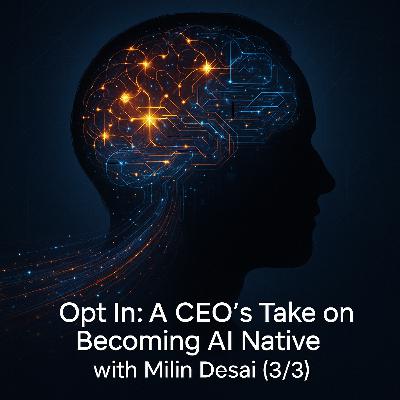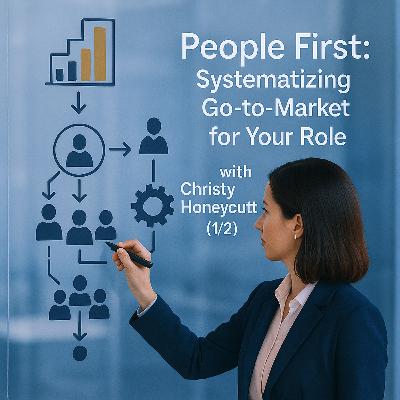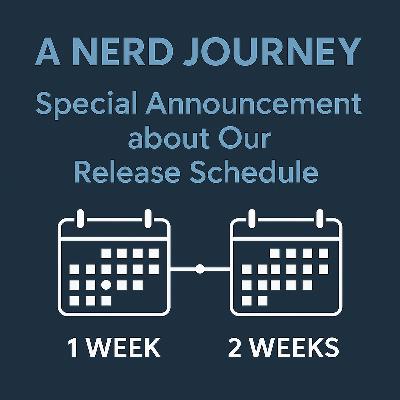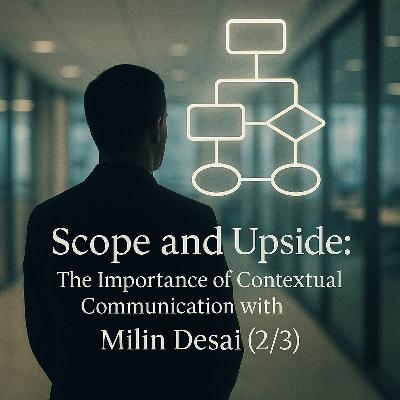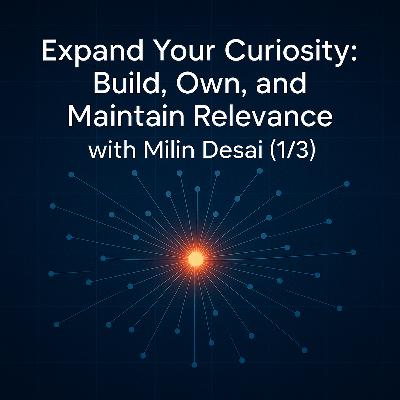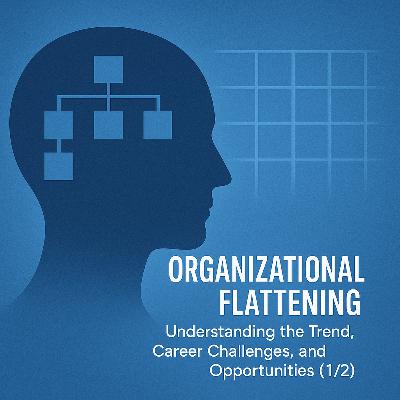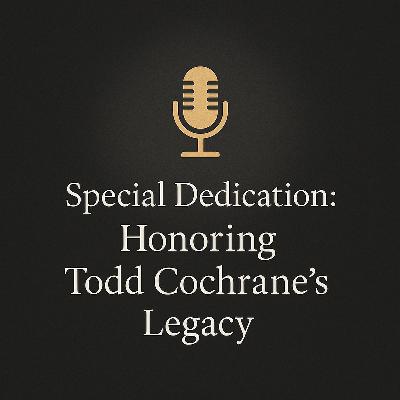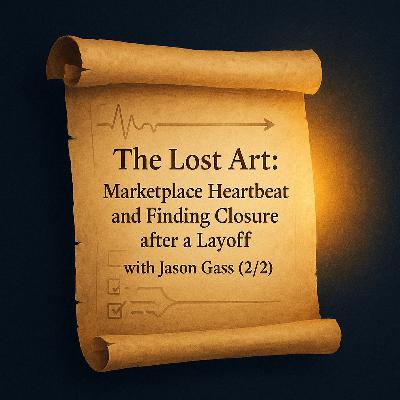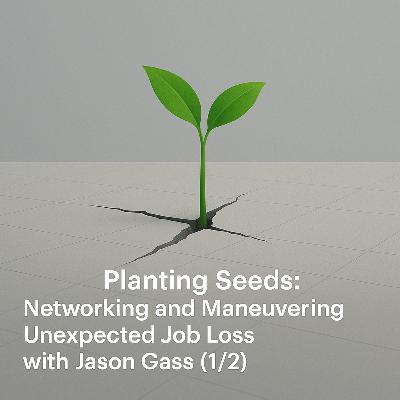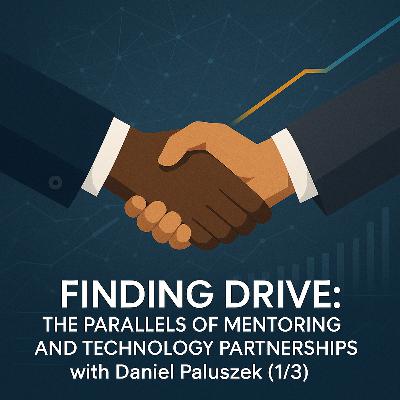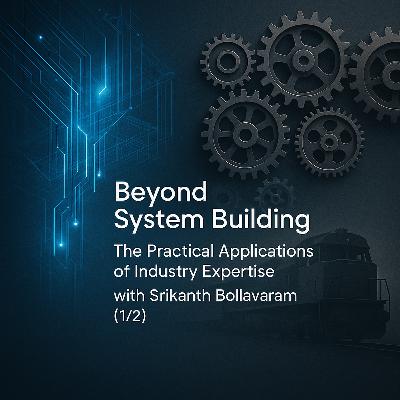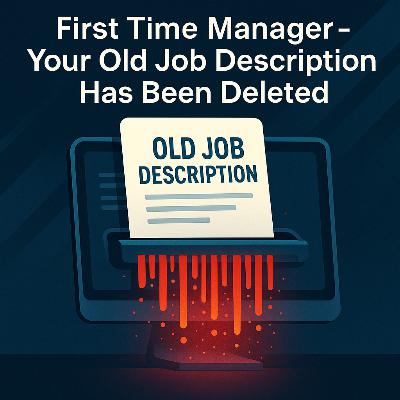Opt In: A CEO’s Take on Becoming AI Native with Milin Desai (3/3)
Description
What does it mean to become AI native? It’s not about using every AI tool on the market. For Milin Desai, the CEO of Sentry, it’s about becoming familiar with the tools and opting in to use the capabilities that deliver practical value. This mindset was born while Milin was the general manager of a business unit at a software company. In this role, he had to manage a profit and loss statement, learning the art of constrained resource planning and organizational adaptability.
In episode 351, our final installment of the conversation, listen as Milin describes both the gravity and different intensity of the CEO’s role compared to past roles. You’ll get insight into the strategy behind enabling an entire organization to shift and become AI native, how this translates into value for customers and employees, and how the individual contributor can be a better contextual communicator when speaking to busy leaders.
Stick with us until the end to understand how a set of first principles can guide our career progression if we choose to actively participate in it.
Original Recording Date: 09-29-2025
Milin Desai is currently the CEO of Sentry. If you missed parts 1 and 2 of our discussion with Milin, check out Episode 349 – Expand Your Curiosity: Build, Own, and Maintain Relevance with Milin Desai (1/3) and Episode 350 – Scope and Upside: The Importance of Contextual Communication with Milin Desai (2/3).
Topics – Contrasting the Role of General Manager with CEO, Embrace Practicality with New Technology, Junior Personnel and a Return to First Principles, Shifting Organizational Focus to Becoming AI Native, Contextual Communication to Leaders and Parting Thoughts
2:41 – Contrasting the Role of General Manager with CEO
- General managers usually own a profit and loss statement (or PNL statement). How was this different than the things Milin had previously gone through?
- Milin says you do have to prepare yourself for it, and his experience as part of product teams was very helpful to gain familiarity with many of the elements of the general manager role (i.e. revenue protections, investing resources in specific efforts, etc.).
- Things get very interesting when you are managing PNL in a constrained environment. Milin gives some insight into annual planning and the behaviors he has observed during these times.
- “Very rarely do people come back and say, ‘I’ve got the same org. I’m going to reshape the org, move things around, and I’m going to do these new things with the same number of people.’ I think most leaders are not very good with that philosophy.” – Milin Desai
- In this role Milin tells us he learned how to do planning with specific constraints in mind (i.e. stress testing as if no resources / extra people could be added), and this idea of keeping teams lean taught him about the adaptability of an organization.
- “I really think every organization should do that, and then, you always have the ability to go add more people…. Structurally say, ‘is this how we still want to operate?’ And we rarely do that…. I knew the numbers, the resources, and everything else. We did a lot of planning. But what I learned I needed to get better at is this constrained planning…” – Milin Desai
- Milin loved working as a general manager and thinking through how to optimize even if the organization didn’t get everything it wanted.
- “What is the hardest thing to do? To say no. What is the hardest thing for a product manager to do? Shut down a feature. What is the hardest thing for a VP of engineering to do? To shut down a product…. I’m lucky enough to have a leadership team that…thinks along those lines. We are unconstrained, but we kind of try to make sure…let’s put some artificial constraints and see what we would do different.” – Milin Desai
- Nick mentions this is analogous to the employee who is no longer a fit and having to say no to that person moving on with the company.
- What is the contrast between being a general manager of a business unit and being the CEO of an entire organization?
- Milin remembers some of the conversations when he was considering becoming a CEO.
- “Milin, are you sure you want to do this? And it was not a capability question. It was, ‘do you understand what you are signing up for?’ …It is very different. You are responsible for everything. There is no other person. There is no other excuse. There is no other system I can blame. Something goes wrong at Sentry…I am it. And I have to go to sleep every day thinking about it. I wake up every day thinking about it.” – Milin Desai, quoting a question from former boss John Martin and speaking to the contrast of being CEO compared to general manager
- You have to know you want to be CEO. Many people think they want to do it until they are doing it and realize how difficult it is.
- Milin admits being CEO has been difficult, but having a great team has been very helpful.
- Before taking the role, Milin spoke to his wife about it. He describes the role as “a very different intensity.”
- Three months into Milin being CEO of Sentry, COVID showed up. That is a challenge he never would have expected.
- “It’s very different to be a GM versus being a CEO. You’re using your same skills, but it’s a completely different magnitude of responsibility and impact.” – Milin Desai
- As a general manager of a business unit, Milin could change the trajectory of his business unit. As CEO, mistakes are much more costly. But you cannot do it in fear. In fact, for Milin, the larger impact of his role is exciting.
- The right partners and team around you as CEO are very important as are taking and applying lessons you previously learned. Milin continues to push himself to improve over time even after reaching the CEO level.
9:22 – Embrace Practicality with New Technology
- John cites technology waves like virtualization, cloud, mobile, and generative AI. With generative AI, many of us get value from it. But many people are unconvinced of the value and are even fearful it will turn into something like Skynet (a reference from the movie Terminator 2). How does Milin approach people with this mindset?
- Milin is practical with his approach to technology.
- “The unconstrained view of what AI could do…we have seen it in movies already. So, I think the unconstrained aspect of this is what we can imagine or maybe even worse…. You can almost think about that and worry and not participate and be on the other side if that happens…. Or, just practically, on a day-to-day basis, figure out what aspects you want to opt in. So, I’m more in that camp…. On the AI front, just think about how it could practically help you on a day-to-day basis versus trying to worry too much about all the aspects, some of which you absolutely don’t even control…. I think it will bring productivity in ways that we don’t even know.” – Milin Desai
- For example, Milin doesn’t have a voice assistant, didn’t find them useful, and did not opt in.
- If you’re worried about supporting a bigger cause, Milin tells us that bigger cause is going to happen irrespective of us supporting it. Instead, we should think about how to practically use AI tools and become an active voice in it.
- Milin tells us his wife just started using ChatGPT and loves it. He asked her the value question on whether it was worth paying for it vs. staying on the free tier after she talked about how much it helped. She agreed that it was worth the money.
- Milin cites the potential for productivity gains we don’t even know or understand yet. For example, imagine a robot doing laundry for you so you can do something else.
- Milin thinks there will be some significant value points with robotics and AI. He’s excited at the potential for optimizing daily tasks that this could bring.
- “Just be practical in how you’re using it and how it will bring value to your life, and the ones that you don’t find valuable, don’t do it. I don’t try every AI tool…. But the things I care about, I lean in.” – Milin Desai
- We don’t control the unconstrained and should not worry about it according to Milin, but we can be a positive participant in this (AI) by participating in communities that serve the greater good in this area.
- Milin says the idea of an AI bubble bursting will be determined over time, but transformation is happening.
- There are business use cases in vertical industries for AI (i.e. for medical transcribing). It’s not just people doing personal research at home, for example.
- The intersection of AI and robots will be an exceptional thing.
- We have to figure out our place in all of this, which is a harder question.
- “I fundamentally believe you will still need engineers. You will still need certain things. But certain functions are getting automated…. You’re going to have to figure out where is the new value being created and how…you participate in the new value system.” – Milin Desai
- This comes back to curiosity, asking good questions, listening, watching for where things are moving, etc. We can apply those same principles to the field of AI.
- Milin tells us almost every company out there is willing to let you explore and learn when it comes to AI (which means. At Sentry, people are encouraged t

